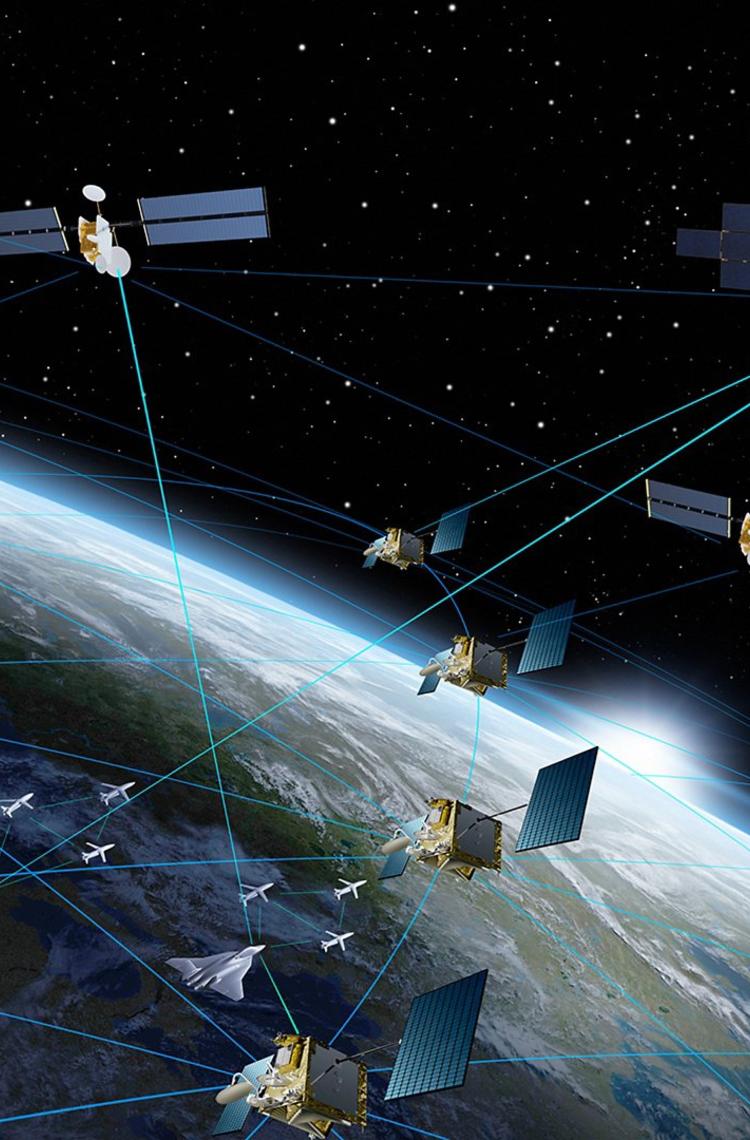The Future Combat Air System (FCAS) will create a network of manned and unmanned platforms in the sky from fighter to drones, up to satellites. Connected to ground and maritime forces, these air- and space-borne assets will bring the next level of Air Power to denied environments
How will Space make a difference to FCAS?
Connectivity is a key requirement for the Future Combat Air System. With increasing amounts of secured information shared between forces, data access and processing capabilities will be game-changers in improving situational awareness and ensuring mission success.
For FCAS to operate as a system-of-systems, space connectivity needs to be fast, secure and global. This means satellite constellations must deliver resilient, secure, high data rate communication services, support secure geo navigation, provide global, real-time, reconfigurable coverage, guarantee low probability of intercept and detection, and be capable of joint forces’ operations.
Space not only connects but also contributes directly to improving situational awareness:
-
Space based Intelligence, Surveillance & Reconnaissance (ISR) satellite constellations will allow rapid on demand collection and near real-time delivery of tactical ISR information. This will enable the resilient delivery of air, ground and sea situational awareness far beyond the line of site.
-
Space-based sensors using the above satellite constellations will be key to detecting hypersonic and/or stealth platforms in near real time.
-
Space-borne Aerial Situational Awareness and Navigation aids in hostile environments will also be provided from such Space-based platforms, bringing advanced capabilities and performance to FCAS.
FCAS will be an incremental journey with several target architectures planned along the way to achieve full collaborative combat by 2040. Space-based architectures will need to be fully operational at this time.
So, how do we get there? Technology demonstrators for such constellation satellite systems will be a first achievement. An initial generation of satellite processors and optical inter-satellite links will then enable testing of new air interfaces and network communication techniques prior to developing a multi-layer Non-Geostationary Satellite Orbit (NGSO) constellation after 2030.
Airbus’ proven and existing capabilities in the FCAS partner countries put these ambitious targets within reach. The pedigree of national security secure communication programmes such as SatCom-BW and groundbreaking laser data transfer of the SpaceDataHighway can now be combined to enhance future capability. The rapid and highly digitalised and automated experience of the OneWeb constellation and its derivative products serve as a basis for cutting-edge Earth observation programmes like CNES’ upcoming CO3D – while also providing lessons for the fully reconfigurable OneSat telecommunication satellites. Such highly agile and flexible satellites will form the cornerstone of the FCAS space capability. Know-how in navigation, proven through EGNOS and Galileo, as well as remote sensing, optical and radar observation, round out an unrivalled industrial skill set across France, Germany and Spain.
These, and many more mature technologies will allow the Space segment of FCAS to play a major part in allowing European Air Forces to achieve Future Air Power in denied environments.
